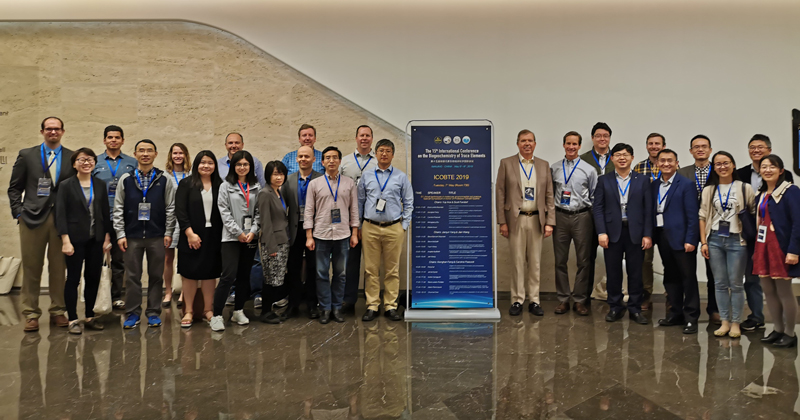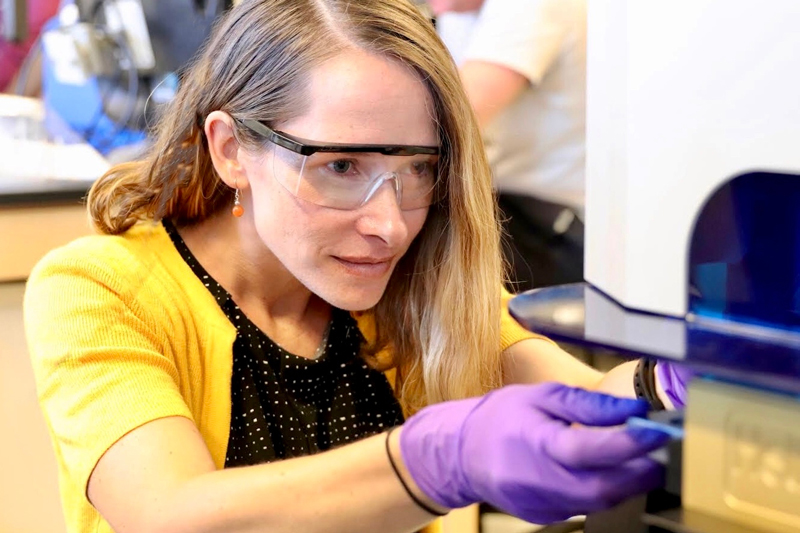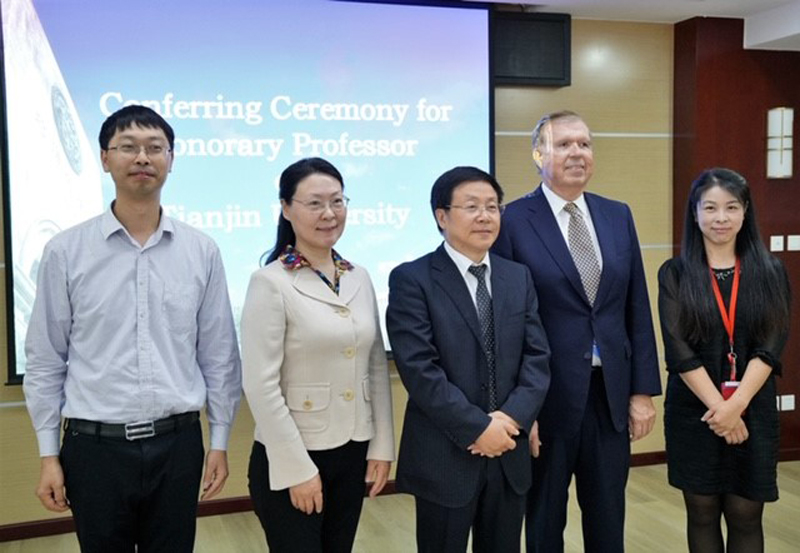


Trace elements
Photo by Monica Moriak and courtesy of Don Sparks, Angelia Seyfferth, Nanjing University and Tianjin University June 18, 2019
Don Sparks honored as pioneer in environmental science at trace elements gathering
In the city of Nanjing, an ancient capital of China, scientists from across the globe gathered to discuss state-of-the-art research at the 15th International Conference on the Biogeochemistry of Trace Elements. Essential for human nutrition, these elements — like arsenic and chromium — can have toxic effects depending on the concentrations.
The University of Delaware’s Don Sparks was there to help make sense of the science, at least as it pertained to soil, and to be honored for his decades of research and scholarship, teaching and mentoring.
“Don has changed our understanding of and our approach to studying soils, providing a legacy of innovation and advancement,” said Scott Fendorf, who got his doctorate at UD and is now the Terry Huffington Professor and senior associate dean for academic affairs in School of Earth, Energy, and Environmental Sciences at Stanford University. “In addition to his scientific accomplishments, it is his humble demeanor, training of students and postdocs, and fostering of scientific careers that is truly awe-inspiring. Having graduated from his program more than 26 years ago, one of my greatest privileges is to call him my friend and mentor.”
At UD, Sparks is the Unidel S. Hallock du Pont Chair in Plant and Soil Sciences in the College of Agriculture and Natural Resources, Delaware Environmental Institute (DENIN) director, and Francis Alison Professor of Soil and Environmental Chemistry.
Organizers of the Nanjing event wanted to kick off the five-day conference with a celebration of Sparks’ contributions. In the audience were 24 of his former students, postdoctoral researchers and visiting professors from around the world. Current UD postdoctoral researchers Jason and Matt Fischel were among those presenting. (While in China, Sparks also traveled to Tianjin University, where he was bestowed with an honorary professorship — his fifth from a prominent Chinese university.)
In 1990, Sparks’ UD research group was among the first in soil science to use synchrotron-based techniques — powerful X-rays to study how metals are cycling through soil. In soil mineral-water interface chemistry, he pioneered the application of techniques like extended X-ray absorption fine structure (EXAFS) and Fourier-transform infrared (FTIR) spectroscopies for chemical fingerprinting and determination of speciation — impacting cycling and toxicity — of nutrients and metals in natural materials such as soils and plants. The use of these technologies has been instrumental in predicting the fate of contaminants in the soil and water environment and in making decisions to stop environmental damage.
In the Nanjing conference’s first symposium, the topic was novel techniques in molecular environmental soil science. Sparks was the pioneer of many of them.
“Many trace elements can cause toxic responses in people,” said Angelia Seyfferth, UD associate professor of biogeochemistry and plant-soil interactions. “In order to minimize human exposure to these contaminants, it’s important to understand how they cycle in the environment.”

While Seyfferth is not a direct Don Sparks’ academic descendent, they are still very connected. Like many graduate students, her textbook on soil chemistry was written by Sparks. It now sits on the bookshelf in her office. She did her postdoctoral research at Stanford under Fendorf. Her doctoral adviser David Parker led the soil testing program at UD and conducted research with Sparks.
“He is the father of this field of soil chemistry,” Seyfferth said. “He paved the way for other researchers and has such a long-lasting legacy.”
Sparks is quick to say advising graduate students is his favorite part of the job.
“I try not to focus so much on me,” Sparks said. “When I was a graduate student, my adviser told me, ‘Once you’re retired and gone, people are not going to remember you for your papers and awards. They’ll remember the impact that you had on students.’ And I truly believe that. Throughout my career, I’ve had 64 graduate students. To see the growth while they are at UD and follow what they accomplish afterwards has been really satisfying.”
Digging into environmental soil science
During the symposium, attendees discussed interface chemistry in minerals and water. Understanding real soil systems is fundamental to understanding the biogeochemistry of trace elements. Researchers seek to study not just an element, but also, as the level of toxicity depends on the chemical form, the oxidation state or form.
“Then we can investigate what is the element bonding to in, say, a mineral or a soil,” Seyfferth said. “Knowing that information tells us how easy it is released back to the water phase, where it can be taken up by plants, migrate to ground water or adhere to the soil.”
Sparks helped UD obtain many resources that have benefitted younger faculty members like Seyfferth. For example, through an Established Program to Stimulate Competitive Research (EPSCoR) grant led by Sparks, the University acquired a laser ablation-inductively coupled plasma-mass spectrometry (LA-ICP-MS). In solid-phase trace analysis research, UD’s newest version of the technology also has an ion chromatograph for liquid phase speciation analysis of trace elements such as arsenic.
“It’s a huge advance for UD,” Sparks said. “We can get down to extremely low concentrations of trace elements. You can determine speciation — the form of the metal.”
Seyfferth, who chaired a separate session on arsenic and cadmium in rice, added, “These elements have low abundance in soil and the Earth’s crust. As an example, this instrument allows us to look at parts per quadrillion levels of arsenic in our water.”
Her research group uses the device to understand arsenic concentrations and speciation in rice — a staple crop for nearly half of the people on the planet. Sparks’ research group uses it to determine the form of metals in the solution phase.
“UD has just a super group of faculty in environmental science and engineering,” Sparks said. “We have a lot of early career faculty, which bodes well for the future. And we’re currently doing a cluster search for six additional faculty members in the area of water security in coastal environments. These areas will complement the expertise that we already have on campus.”

Contact Us
Have a UDaily story idea?
Contact us at ocm@udel.edu
Members of the press
Contact us at 302-831-NEWS or visit the Media Relations website

